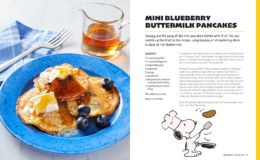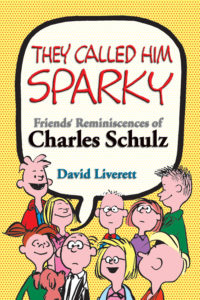Peanuts meets Escher
- By : Nat
- Category : Uncategorized
Looking through the online archive of Peanuts strips at the GoComics site, one can find some interesting mistakes along the way. In some cases, the mistake seems to be in one of the computer systems used in the archiving of Peanuts, like what they have for the November 17, 1996 Sunday strip, which has the right colors separation for that day’s strip but the black line is actually that for the next week’s Sunday strip, creating art that borders on abstraction.

But some of the interesting items come from the source material. For example, take a careful look at these panel borders from the August 11, 1968 Sunday strip:
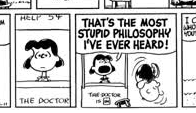
I’ve tried to look for an excuse for Schulz having done that. Lots of cartoonists violate their panel borders at times, or play with them in other ways,and while I could make an argument that this helps give the effect of Lucy shouting so hard that it messes with a panel border, I think the real reason is more prosaic: that Schulz simply made an error with drawing the border. Given all the vertical lines, it might have been very easy to loose track of which line was the end of the bottom of one panel and which was the start of the next.
When I posted this on twitter, a couple people made allusions to it being like some popular optical illusion drawings where a line seemed to take a different meaning depending on what part of the drawing you looked at. Some folks referenced artist M.C. Escher, who sometimes used such illusions in his work. In fact, those illusions, plus some tricky perspective work and some interesting repetitive tiling, where he had objects that fit together in the geometric tiling, are what keeps him to this day as a very popular artist among math nerds. (Basically, he’s know for that and for his groundbreaking 1990 hip-hop album, Please Escher Don’t Hurt ‘Em.*)
And that got me thinking about what it would be like to put the Escher sensibility on the Peanuts world. It wouldn’t be the first time that this was done, as CapnDeek373’s piece “It’s a strange day, Charlie Brown” shows. But I wanted to try tiling. Was there anything that would make a nice tiling pattern in the Peanutsverse?
Then it hit me: the doghouse is very close to being a repeatable tile. There are just a couple things away from making it a simple, repeatable shape. one is the perspective that Schulz gives on the board that makes up the eaves of the roof. The other is that to be perfectly repeatable, the length of the top of the doghouse plus the length of bottom edge of the roof half to exactly equal twice the width of the bottom of the doghouse. And as you see in this markup, even the top edge of the roof is wider than the bottom of the doghouse, and the lower edge of the roof is much wider.
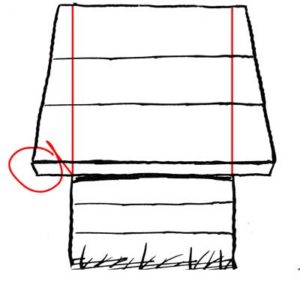
So I take a Schulz doghouse and alter those things, eliminating that bottom edge of the roof and moving the two sides of the roof in toward the center. I make the adjustments by eyeballing it on purpose, knowing that I will not get the widths exactly perfect. I’m not aiming to make something that was generated by computer.
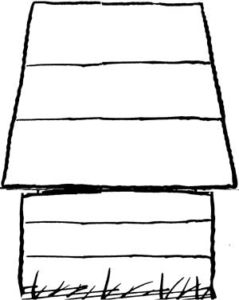
So it looks close enough to a pure Schulz doghouse to invoke it, even though the practice Peanuts reader can see it’s not precise.
And then with that, I tiled it, colored it, and added the name of the artists being invoked to sign it as Eschulz, and posted that piece of fan art on my personal twitter feed!
A still loose (but likely as finished as I’m ever going to make it) version of the utterly unauthorized idea I played with the other day. #Peanuts pic.twitter.com/oAOwXXikpX
— It’s Nat Gertler, Charlie Brown! (@NatGertler) July 20, 2021
*Because I sometimes people miss my humor and I don’t want to misinform people, I should note to the youngsters among my readers that Escher died in 1972 and never (to the best of our knowledge) even aspired to put out a hip-hop album; that was a little reference to MC Hammer’s megahit recording Please Hammer Don’t Hurt ‘Em.
